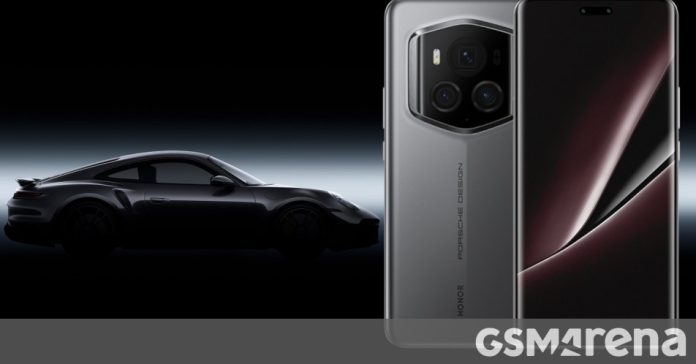Earlier this week Honor started the global rollout of the Honor Magic6 RSR. This is largely similar to the Magic6 Ultimate on the inside, but the outside is the work of Porsche Design.
One thing that puts it above the Ultra is the 24GB of RAM on board (paired with the Snapdragon 8 Gen 3). There is only one storage option and it is 1TB. As for colors, there are a couple to choose from – Frozen Berry (the hero color of the 2020 Taycan) and Agate Gray (a classic paint job of Porsche 911 race cars).

Honor Magic6 RSR in: Frozen Berry • Agate Gray
We have a detailed review if you want to learn more about the RSR model. We put the new autofocus and image stabilization system to the test, which are interesting because they use a Shape Memory Alloy actuator. This model has a more advanced LiDAR autofocusing system than the Pro and is the first in the industry that uses 1,200 point array with AF calculations running at 60fps.
The Magic6 RSR is already available in the UK through Honor.com at a price of £1,600. The Ultimate is not available in the UK, but the Magic6 Pro (12/512GB) is £1,100. The Pro itself is quite similar to the Ultimate and RSR Porsche Design models, save for the bespoke designs on those two.

Honor Magic6 RSR highlights
The RSR will be available in mainland Europe soon too, so we have to ask – will you actually buy one? First, let’s quickly browse through some alternatives.
While no famous design house was involved with the Xiaomi 14 Ultra, the camera ring design of the camera island successfully conveys what this phone is all about. It has a larger main sensor than the Honor (1” type vs. 1/1.3”) and a more traditional 3.2x periscope with a 50MP sensor instead of the 2.5x 180MP solution that Honor chose for its flagship. The LTPO OLED of the Xiaomi hits 3,000 nits at peak brightness, but the dual-layer OLED of the Honor goes even higher – up to 5,000 nits. The Xiaomi 14 Ultra is £1,300 for a 16/512GB model.
Where Xiaomi has its partnership with Leica, OnePlus is working with Hasselblad to tune its cameras. The OnePlus 12 is practically cheap at £900 for the 16/512GB model. It doesn’t need a dual-layer OLED to hit 4,500 nits of peak brightness. The main sensor is smaller (1/1.43”) and the 3x periscope has a 64MP sensor behind it.




Xiaomi 14 Ultra • OnePlus 12 • Samsung Galaxy S24 Ultra • Apple iPhone 15 Pro Max
The Samsung Galaxy S24 Ultra is also an option if you’re looking for a camera-focused flagship. It starts at £1,250, but the 12/512GB model is £1,350 and there is a 1TB version for £1,550. Samsung will support the phone for 7 years and given its track record so far, there’s no reason to doubt it. Honor is more conservative and only offers 4 OS updates and 5 years of patches for its flagships.
The Apple iPhone 15 Pro Max is the other flagship that barges into every discussion about high-end phones in the West. The base model starts at £1,200 (256GB) and prices go up to £1,400 for 512GB and £1,600 for 1TB. Apple is a trend-setter when it comes to design and doesn’t need outside help with its phones. It has some of the best long-term support too.
It’s time to cast your vote – would you splurge on this special edition flagship or not?


